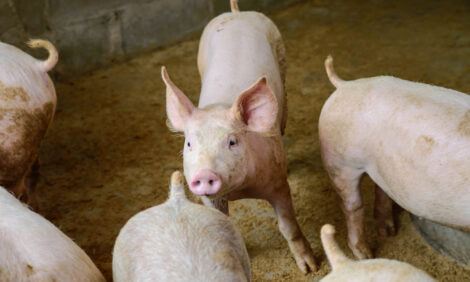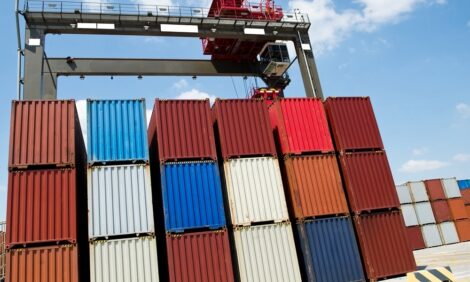



CME: Quantum Changes in Feed Costs
US - To put yesterday’s discussion of potential sow herd liquidation in context, consider the charts below.The first chart shows historic prices and costs for Iowa farrow-to-finish operations per Iowa State University’s longrunning costs and returns estimates. Cost predictions for the remainder of 2012 and 2013 are based on a regression of those historical costs on corn and soybean meal prices and futures prices for those two items as of Tuesday morning at 7:00 a.m. The Future-Implied Ia- Mn hog price is based on Lean Hogs futures at the same time. The model assumes cash purchases of all feed ingredients and cash sales of hogs—no hedging or other risk management activities are included.


It is obvious that 2012 has turned sour big time. Back in February,
this model was showing profits of nearly $19/head for 2012.
Producers felt good about the future. The sow herd was growing slowly
with gains of just under 1 per cent, year-on-year, in December 2011 and
March 2012. The June herd was 1 per cent larger than last year.
The model now shows losses of nearly $8/head for the year
and indicates monthly losses of $23, $33, $39 and $34/head for September
through December. Profits in 2013, based on current futures
prices, are even worse with the average being a loss of $12.23/head.
But the biggest reason that the industry may move quickly
from slow expansion to liquidation is its precarious financial position.
The lower chart shows the accumulated profits of an average
Iowa farrow-to-finish operation on a per head basis since January
1991. Dr John Lawrence, former extension livestock economist and
now assistant dean at Iowa State, first used this back in the crisis of
1998. The measure simply adds the profit earned by selling one pig
per month over the entire time period. Think of it as the balance of a savings account into which the return to one pig is placed each month.
As can be seen, the quantum changes in feed costs of 2008
and 2009 drained nearly 80 per cent of the profits that had been accumulated
as of September 2007. Further the “good“ years of 2010 and 2011 did
not even allow the recovery of half of the ‘08-’09 losses (a level represented
by the red line). And current corn, soybean meal and hog futures
prices indicate that this measure will set successive new lows in
October, November and December of next year. While this cost crisis
is not the permanent shift of 2008 and will likely last, at least at this
severe level, until next year’s crop is harvested, we expect a quick
reaction due to this lack of financial resources. How large the reaction
will be remains to be seen.
Further ReadingGo to our previous news item on this story by clicking here. |








